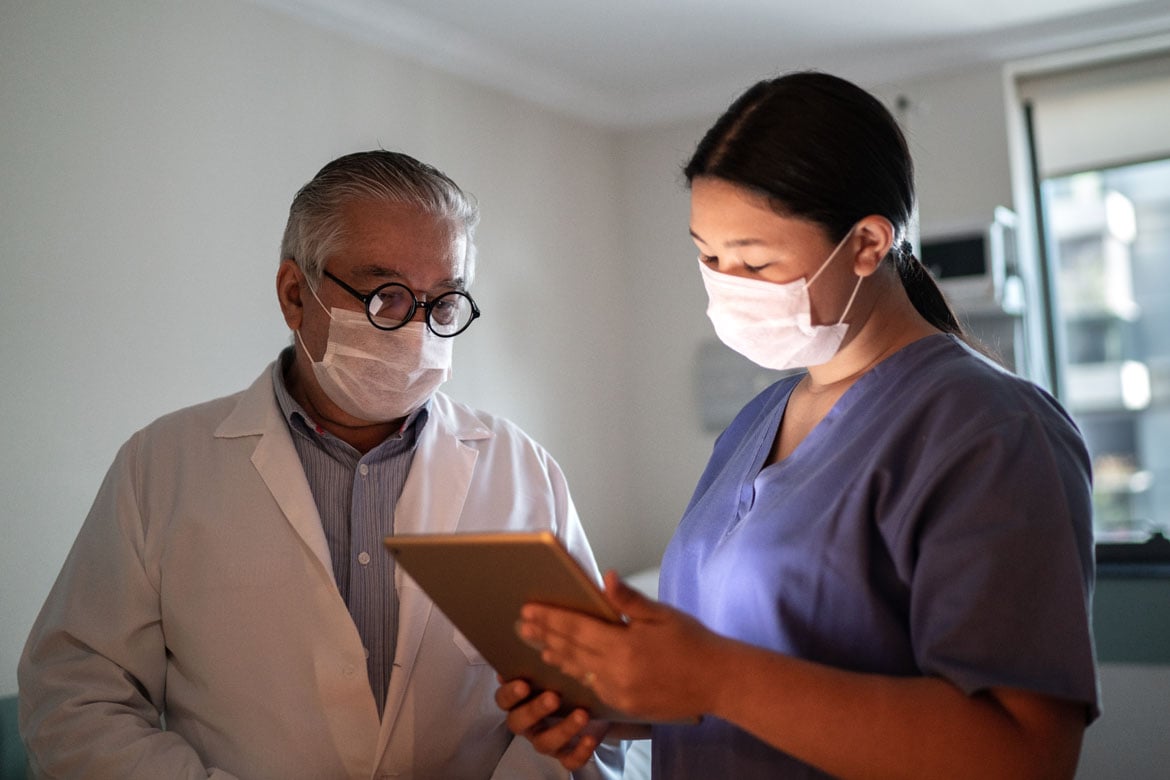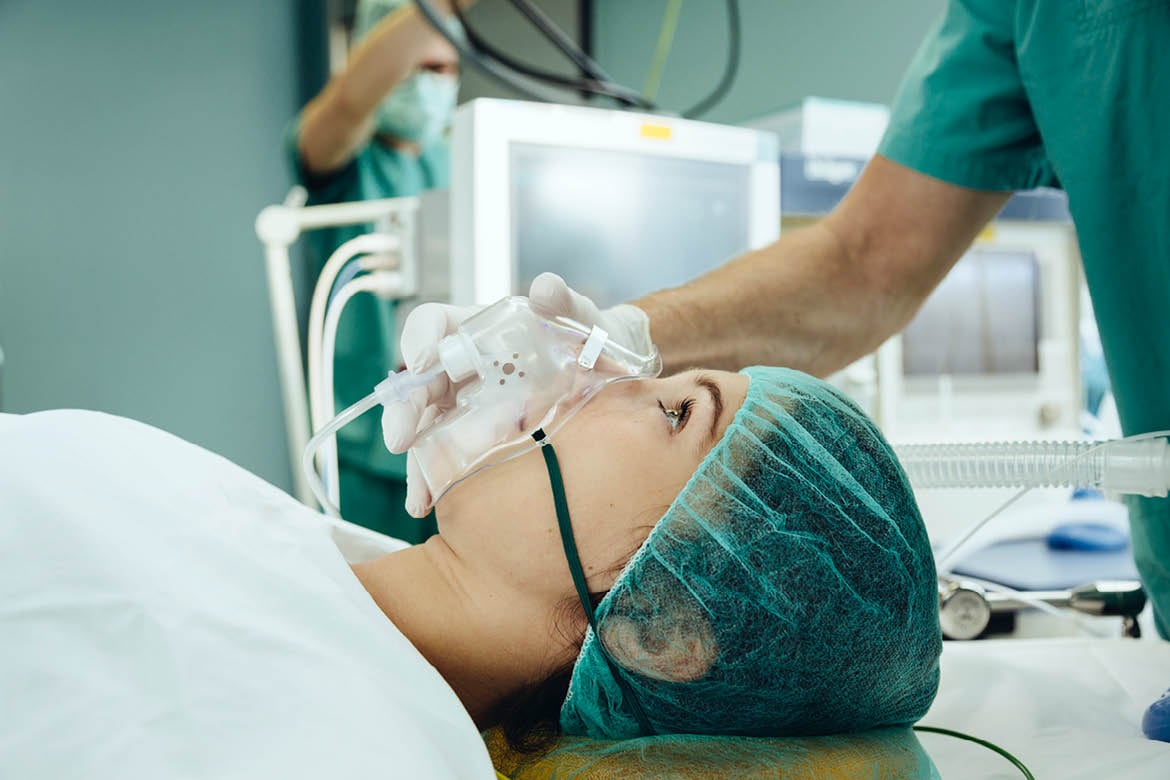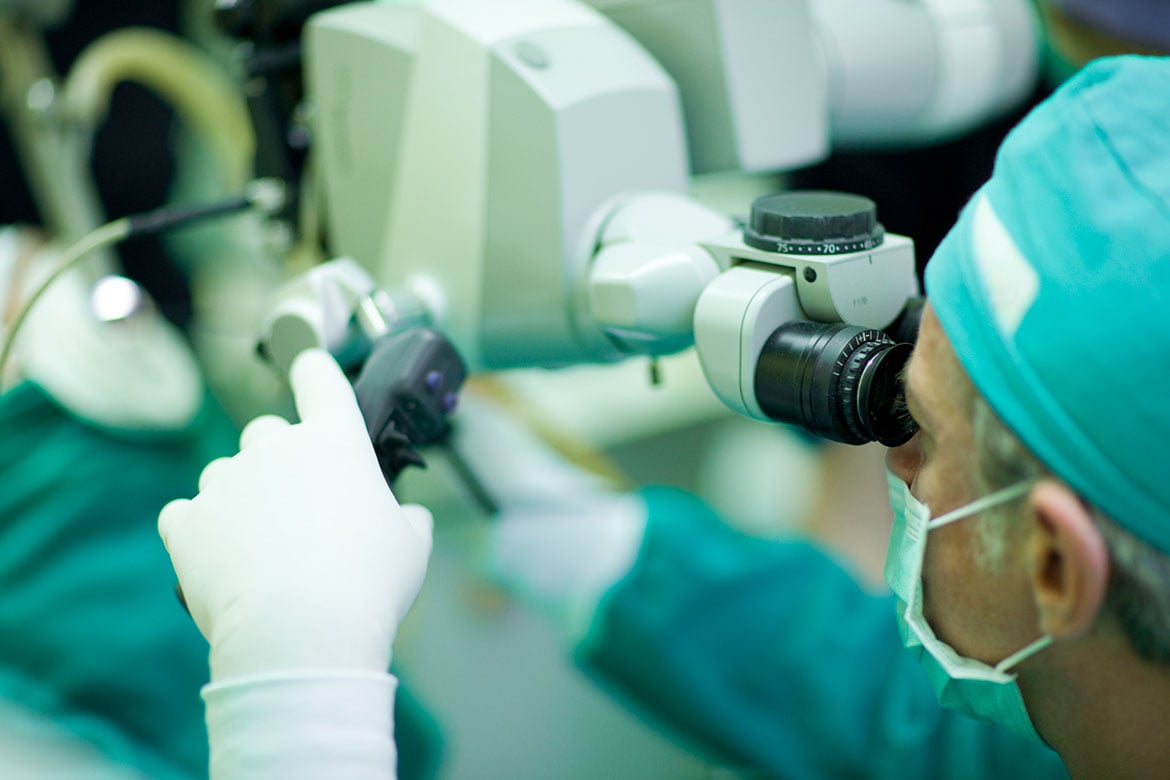- Why education matters
- Nurse practitioner (NP) vs. physician (MD or DO)
- Physician assistant (PA or PA-C) vs. physician (MD or DO)
- Nurse anesthetist (CRNA) vs. anesthesiologist (MD or DO)
- Optometrist (OD) vs. ophthalmologist (MD or DO)
- Psychologist (PsyD or PhD) vs. psychiatrist (MD or DO)
- Pharmacist (PharmD) vs. physician (MD or DO)
- Naturopath (ND) vs. physician (MD or DO)
Why education matters
Physicians are trained to lead, and the AMA stands in strong support of physician-led health care teams. 91% of patients said that a physician’s years of education and training are vital to optimal patient care, especially in the event of a complication or medical emergency. Patients deserve to know who is providing their health care and the education and training of their health care professional.
Addressing scope creep is a critical component of the AMA's work in fighting for physicians. Compare the education and training of physicians and nonphysicians to see why thousands of hours of rigorous education and training make physicians the most trusted and qualified to lead health care teams and why nonphysicians are not a replacement for a physician.
Education matters when dealing with the unexpected.
Education matters in the event of a complication or emergency.
Education matters for the health and safety of patients.
Education matters to support access to high quality care.
Education matters to control overall health care spending.
Education matters to patients.
Nurse practitioner (NP) vs. physician (MD or DO)
Length of graduate level education
- NP: 2-4 years (online only programs allowed)
- MD or DO: 4 years
Years of residency/fellowship training
- NP: Not required
- MD or DO: 3-7 years
Total patient care hours
- NP: 500-750 hours
- MD or DO: 12,000-16,000 hours
Did you know?
In stark contrast to physicians’ education, there is no standardization around practice sites, patient population, or type of care that NP students must perform during their patient care hours. Consequently, the level of exposure to different types of patients and illnesses is highly variable among graduating nurse practitioners.
Note: In 2022, The National Task Force on Quality Nurse Practitioner Education (NTF) established new criteria for NP programs including increasing the required hours of patient care to 750. These criteria have not yet been adopted by accrediting organizations, programs, or certifying bodies.
Physician assistant (PA or PA-C) vs. physician (MD or DO)
Length of graduate level education
- PA or PA-C: 2-3 years
- MD or DO: 4 years
Years of residency/fellowship training
- PA or PA-C: Not required
- MD or DO: 3-7 years
Total patient care hours
- PA or PA-C: 2,000 hours
- MD or DO: 12,000-16,000 hours
Did you know?
Physician assistant educational programs train students to work within physician-led teams. In fact, in a recent survey, 91% of physician assistant students nearing graduation described the physician relationship as “essential” or “very important.”
Nurse anesthetist (CRNA) vs. anesthesiologist (MD or DO)
Length of graduate level education
- CRNA: 2-3 years
- MD or DO: 4 years
Years of residency/fellowship training
- CRNA: Not required
- MD or DO: 4-6 years
Total patient care hours
- CRNA: 2,500 hours
- MD or DO: 12,000-16,000 hours
Did you know?
Nurse anesthetist programs are shifting toward awarding a doctoral degree, but notably have made no significant changes to the number of clinical hours required during the program.
In any case, removing physician (MD or DO) supervision from anesthesia care puts patient safety at risk.
Note: Beginning in 2025, graduates from accredited nurse anesthesia educational programs must meet requirements laid out in the Council on Accreditation of Nurse Anesthesia Educational Program (COA)’s Standards for Accreditation of Nurse Anesthesia Programs – Practice Doctorate.
Optometrist (OD) vs. ophthalmologist (MD or DO)
Length of graduate level education
- OD: 4 years
- MD or DO: 4 years plus 1 year internship
Years of residency/fellowship training
- OD: Not required
- MD or DO: 3-5 years
Total patient care hours
- OD: 1-year clinical rotation
- MD or DO: 12,000-16,000 hours
Did you know?
Optometry students are not trained to perform surgery, whether it be with a laser or a scalpel.
Psychologist (PsyD or PhD) vs. psychiatrist (MD or DO)
Length of graduate level education
- PsyD or PhD: 3 years plus 1 year internship
- MD or DO: 4 years
Years of residency/fellowship training
- PsyD or PhD: 1 year
- MD or DO: 4-6 years
Total patient care hours
- PsyD or PhD: 1-2 years (practicum and internship)
- MD or DO: 12,000-16,000 hours
Did you know?
Psychotropic drugs prescribed by psychiatrists are some of the most powerful in modern medicine, and they affect the entire body.
Psychologists are well-equipped behavioral experts, but their educational requirements include zero training in medicine. A student may become a psychologist without any training in basic sciences, and while a science background is not necessary to skillfully provide psychological services, it is crucial for the safe practice of medicine.
Pharmacist (PharmD) vs. physician (MD or DO)
Length of graduate level education
- PharmD: 2-4 years
- MD or DO: 4 years
Years of residency/fellowship training
- PharmD: not required
- MD or DO: 3-7 years
Total patient care hours
- PharmD: 1,740 hours
- MD or DO: 12,000-16,000 hours
Did you know?
Pharmacists are not trained to examine a patient or make a diagnosis.
Naturopath (ND) vs. physician (MD or DO)
Length of graduate level education
- ND: 4 years
- MD or DO: 4 years
Years of residency/fellowship training
- ND: not required
- MD or DO: 3-7 years
Total patient care hours
- ND: 1,200 hours
- MD or DO: 12,000-16,000 hours
Did you know?
Naturopathy school is not comparable to medical school, despite them both being four years in length. The naturopathic education is rooted in naturopathic principles that emphasize the healing power of nature and the body’s inherent self-healing process. Naturopaths receive education in basic sciences and alternative treatment modalities, which include botanical medicine, homeopathy, hydrotherapy and acupuncture. They do not receive a comprehensive medical education similar to physicians’ education.
Learn more about the AMA's Advocacy in Action priorities.









